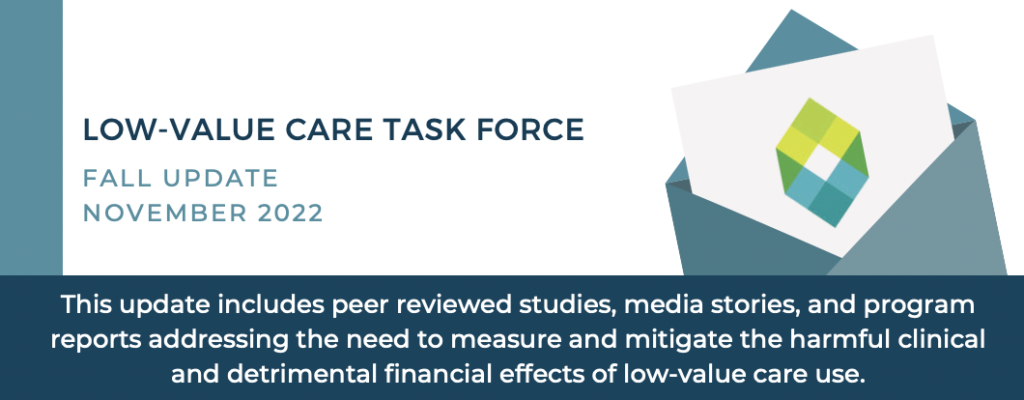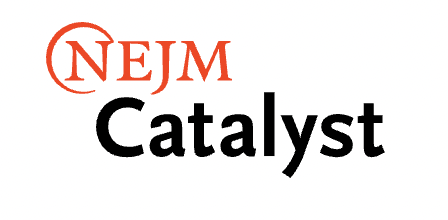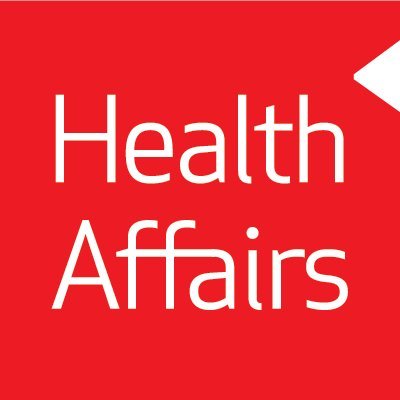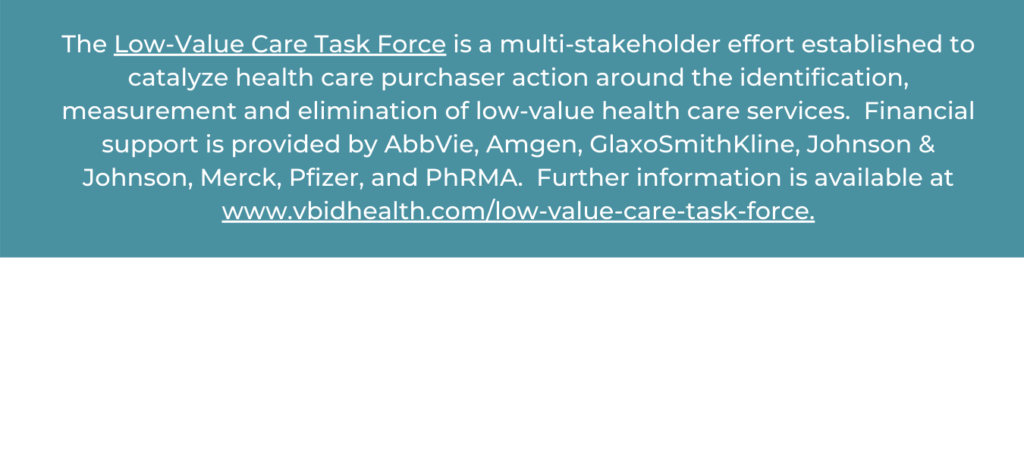
In this issue:
- The Value of Less: Improving Patient Care by Reducing Unnecessary Procedures
- Do Not Routinely Test for Vitamin D
- Cascade Services & Spending Following Low-Value Imaging for Uncomplicated Low Back Pain
- What Health System Characteristics are Associated with Overuse of Health Care in the U.S.?
- The Role of Administrative Waste in Excess U.S. Health Spending
- Development and Pilot Testing of EHR-Nudges to Reduce Overuse in Older Adults
- State-Level Variation in LVC for Commercially Insured and Medicare Advantage Populations
- Anesthesia Care for Cataract Surgery in Medicare Beneficiaries
- Sleep Apnea Diagnosis Panics KHN Reporter – First-hand account of experiencing low-value care in the sleep medicine industry

The Value of Less: Improving Patient Care by Reducing Unnecessary Procedures
In July 2021, informed by the efforts of the Choosing Wiselycampaign, Meritus Health developed a coordinated doing wisely initiative with the goal of reducing 10,000 unnecessary targeted tests over 12 months (5.5% of of the targeted unnecessary lab test and imaging procedures). The initiative exceeded its first year goal by achieving 32,000 fewer tests and images, an overall reduction of 17.3%. Authors believe that their methods of transparency and feedback of actionable data to reduce low-value services present an opportunity for reproducibility. Read more here.

Do Not Routinely Test for Vitamin D
Routine vitamin D testing accounts for $293M in annual U.S. health care spending, though studies show that 25-75% of screening may be unnecessary. Authors of a recent BMJ article suggest that unnecessary testing – driven by patient demand, mass media attention, and correlational studies connecting Vitamin D levels to various health concerns – may best be reduced by multi-level intervention. Read more about proposed practices for change here.

Cascade Services and Spending Following Low-Value Imaging for Uncomplicated Low Back Pain Among Commercially Insured Adults
Existing evidence suggests that low-value imaging for uncomplicated acute low back pain may trigger care cascades. A recent JGIM study delves deeper, examining total and out-of-pocket spending resulting from cascades following low-value X-rays and MRIs for uncomplicated acute low back pain. Findings show that such imaging resulted in a 9-14% increased likelihood of downstream services for commercially-insured adults.

What Health System Characteristics are Associated with Overuse of Health Care in the U.S.?
A recent NIHCM study identified factors that contribute to health care overuse across 676 health systems. Findings suggest that a higher number of beds, more incorporated medical groups, and investor-owned health systems were associated with overuse. Factors associated with less overuse included more PCPs, teaching, higher burden of uncompensated care, integrated delivery systems, and greater commitment to high-value care.

The Role of Administrative Waste in Excess U.S. Health Spending
A new Health Affairs research brief evaluates wasteful administration as a driver of health spending and growth in the U.S. The findings show that administrative spending accounts for 15-30% of overall health spending, and at least half of that is wasteful. Authors suggest three systemic reforms to reduce administrative waste: all-payer rate setting, single-payer systems, and capitation.

Development and Pilot Testing of EHR-Nudges to Reduce Overuse in Older Primary Care Patients
Unnecessary testing and treatment in older adults can lead to significant morbidity and mortality. In this pilot study, researchers evaluated whether clinician decision support tools and behavioral nudges integrated into the electronic health record improved clinicians’ adherence to evidence-based practices. Findings suggest that EHR CDS alerts can be effective in three areas of overuse: PSA for prostate cancer screening in adult men 76+, urinalysis or urine cultures for non-specific reasons in women 65+, and diabetes treatments in adults 75+.

State-Level Variation in Low-Value Care for Commercially Insured and Medicare Advantage Populations
Recent analysis of administrative claims data from commercially insured populations finds that use of 23 low-value services amounted to $3.7B in wasteful spending between 2009-2019. Results point to substantial state-level variation in utilization, prices, and overall spending. Authors state that variation in spending is driven primarily by high average prices rather than high utilization, and conclude that addressing price variation of low-value services is pivotal to reducing unnecessary spending.

Anesthesia Care for Cataract Surgery in Medicare Beneficiaries
More than 2M elective cataract surgeries are performed annually, with most patients receiving anesthesia care. In this study, authors compare and evaluate anesthesia care among Medicare patients undergoing cataract surgery versus other elective, lower-risk procedures. Findings show that perioperative systemic complication rates among cataract patients are lower than other low-risk procedures for which anesthesia is less commonly used.

Severe Sleep Apnea Diagnosis Panics Reporter Until He Finds a Simple, No-Cost Solution
“Unnecessary care is a big reason Americans’ insurance costs – premiums, copays, and deductibles – tend to rise year after year,” states KHN journalist, Jay Hancock. In this recent article, Hancock shares his personal encounter with low-value care in sleep medicine – an industry that stands to profit greatly from broad screening for sleep apnea that often leads to pricey diagnostic studies, equipment sales, and questionable treatments. Following an initial diagnosis of “central sleep apnea” and much journalistic research, Hancock found that a free simple alternative therapy was just as effective as a costly CPAP.

